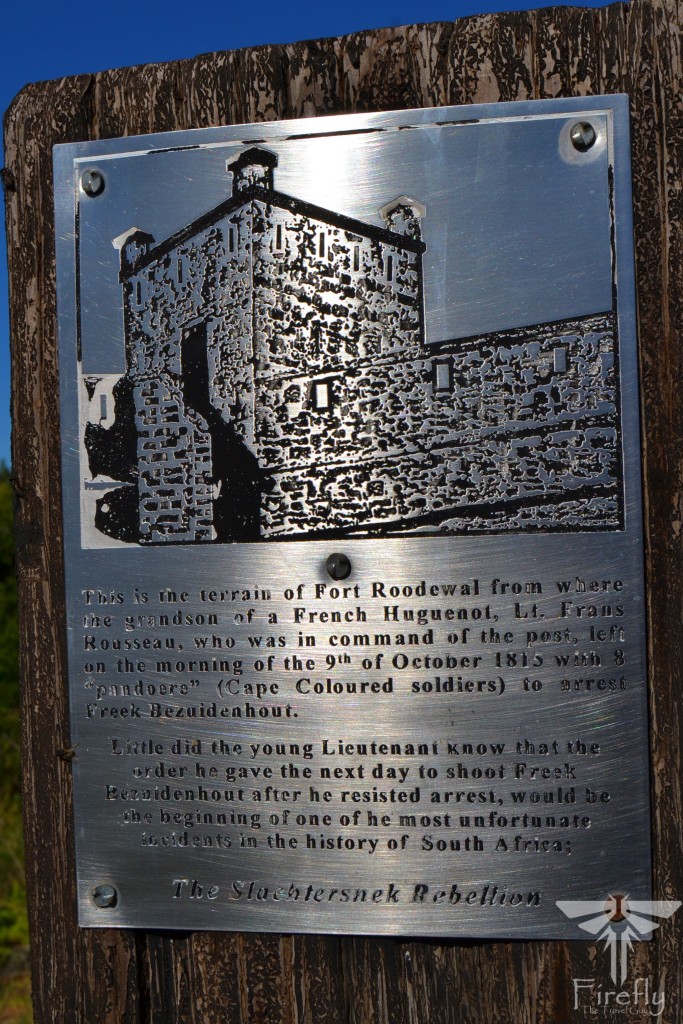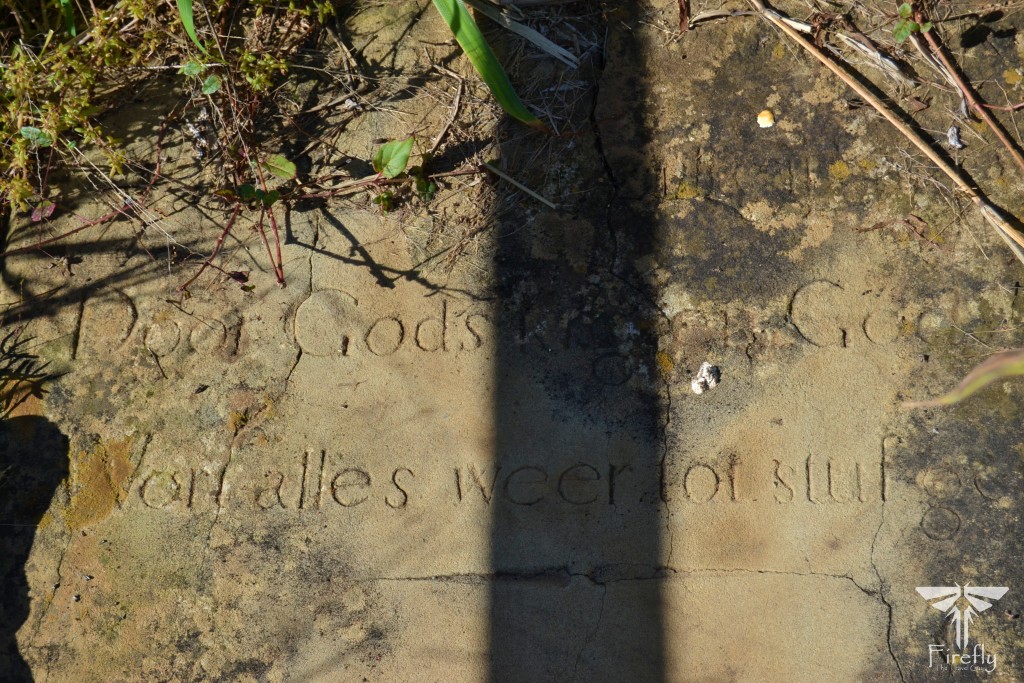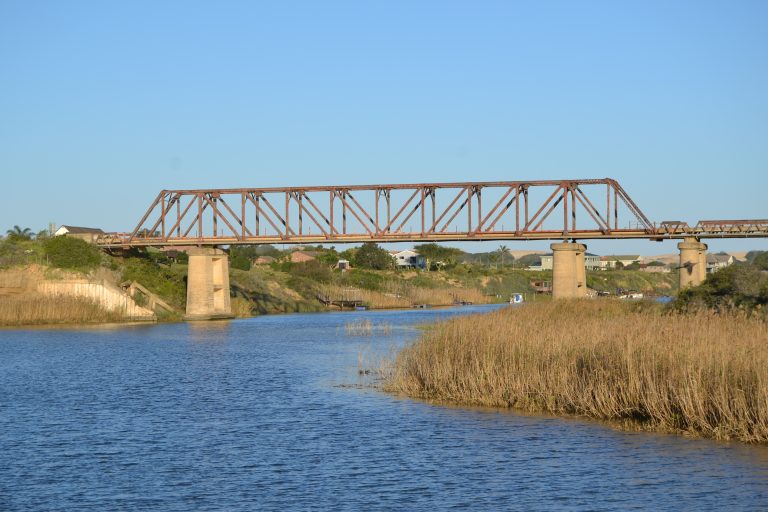
Big monuments and historic buildings are easy to spot and often stand out. It’s the ones that are often a bit obscured that very few people actually know about or get to visit. One such site is the Roodewal historic site next to the N10 near Cookhouse in the Eastern Cape. This site doesn’t just have one, but three separate heritage-related items all linked to the same place. Roodewal Farm. I knew about one of them because there is a sign next to the road pointing it out, not that many people stop to visit it. It was only after taking lots of photos and doing a little research that I realised how significant this site is in relation to nearby Cookhouse and the district in general.

The first site, and the one pointed out by the road sign, is a small stone pyramid relating to the Pringle party’s rest camp. It was at this site that a Scottish party of British Settlers stopped in 1820 en route to their new settlement in the Baviaans River Valley.
Thomas Pringle (5 January 1789 – 5 December 1834) was a Scottish writer, poet and abolitionist. Known as the father of South African poetry, he was the first successful English language poet and author to describe South Africa’s scenery, native peoples, and living conditions. Whilst facing hard times back in Scotland and unable to earn a living, Pringle secured free passage and a British Government resettlement offer of land in South Africa in 1820. The land granted to the Scottish party in the Baviaans River Valley was miles away from the bulk of the 5,000 English Settlers who were granted land in the area of Grahamstown. Being lame (he was injured in an accident in infancy), he himself took to literary work in Cape Town rather than farming, opened a school, and conducted two newspapers. However, both papers became suppressed for their free criticisms of the Colonial Government, and his school closed. Without a livelihood, and with debts, Thomas returned to Britain and settled in London.

The plaque on the monument reads:
THE SCOTTISH PARTY OF 1820 SETTLERS LED BY
THOMAS PRINGLE CHANGED WAGONS, DRIVERS
AND OXEN AT ROODEWAL MILITARY CAMP
IN THIS VICINITY AND AFTER A REST OF TWO DAYS
CROSSED THE GREAT FISH RIVER NEAR HERE
AND PROCEEDED ON THEIR JOURNEY
TO THEIR SETTLEMENT IN THE
BAVIAANS RIVER VALLEY.

Right next to the stone monument stands an old railway sleeper with another plaque on it. This monument refers to The Slachtersnek Rebellion and The Roodewal Fort. Fort Roodewal was one of a number of outposts set up by Lord Charles Somerset along the Fish River between 1814 and 1819.

The inscription on the plaque tells the story of the Fort’s link to the Slagtersnek Rebellion.
This is the terrain of Fort Roodewal from where
the grandson of a French Huguenot, Lt. Frans
Rousseau, who was in command of the post, left
on the morning of the 9th of October 1815 with 8
“pandoere” (Cape Coloured soldiers) to arrest
Freek Bezuidenhout.

Little did the young Lieutenant know that the
order he gave the next day to shoot Freek
Bezuidenhout after he resisted arrest, would be
the begining of one of the most unfortunate
incidents in the history of South Africa;
The Slachtersnek Rebellion

The third heritage site is the grave of the Van Aardts: 1825 and 1856. The Van Aardts have been farming at Roodewal for many generations.
Frans Johannes van Aardt farmed on the farm Roodewal located south of Bosberg on the West Bank of the Great Fish River. His first wife, Susanna Tregardt Wilhelmina was the sister of the Great Trek leader Louis Tregardt. She operated the cook house for British soldiers at the Roodewal Post which led to the name Kookhuisdrif, Kookhuis and later Cookhouse. After her relatively early death, date unknown, Frans Johannes remarried Maria Johanna Mentz, widow of Charles Allen. According to her death notice, “She died accidentally on the road to Balfour, Stockenstrom district” on 01/30/1869.

The farm is still family-owned after more than 200 years. It is currently owned by Willem Petrus van Aardt, a descendant of Frans Johannes and Susanna Wilhelmina van Aardt, a well-known Merino farmer of the Eastern Cape. Willem was searching for and identifying the graves of his ancestors. With the help of an old farmworker the grave of Frans Johannes Van Aardt, was found near the Fish River. He was born on the 12th September 1777 and died 6 June 1856. His two wives are buried with him. The first wife was Susanna Wilhelmina Tregardt (married 21st October 1798) and Maria Johanna Mentz MENTZ married 11 Mar 1826.

The original gravestone is still on the site and although it’s cracked, the words can still be clearly read.
Waar gij nu ben waar ik voordesen
Waar ik nu ben zult gij haas weesen
Door Gods krag en Gods mag
Wort alles weer tot stuf gebrag
This roughly translates to:
Where you are now where I anticipate, Where I am now you have been, By God’s power and God’s might, everything is turned to dust again.

This whole site may seem very insignificant to those passing by on the road, but to those with a keen interest in the history of the area, both Dutch and British, this spot really is worth stopping and reading up on a little more. I’m hoping this post would pique at least a little interest for some.




